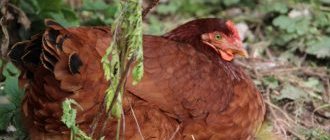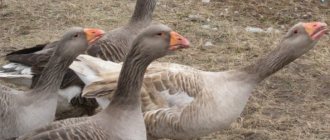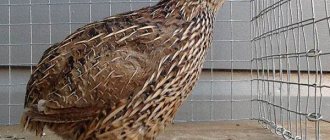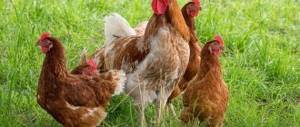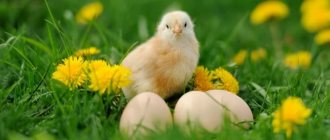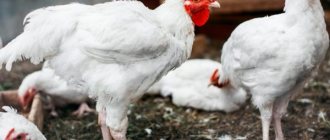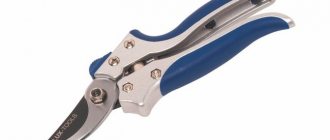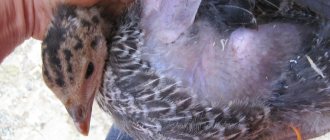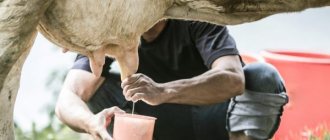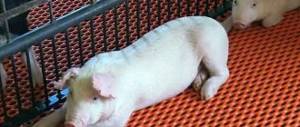How to pluck?
Plucking geese at home occurs in several ways:
- dry;
- hot;
- using special plucking devices.
The dry method is used immediately after slaughtering the goose, before it cools down. Feathers are removed manually, pulled out in the direction of growth. The procedure begins with the large feathers of the wings and tail, ending with the chest, neck and paws.
Hot methods include scalding and steaming with an iron. In the first case, the carcass is doused with hot (about 85⁰C) water, and then the feathers are removed. The method is quite widely used, but has several disadvantages:
- you need to pluck quickly, before the carcass has cooled down;
- after scalding, the shelf life of meat is reduced;
- feathers are unsuitable for further use.
Another hot method involves using a pump and an iron with a steam function. The carcass is pumped with air until the feathers rise. Then cover with a damp cloth and steam with an iron. After this, the feathers are easily removed and retain their properties.
Plucking
The use of feather plucking machines significantly speeds up the procedure for removing feathers and is often used on farms with large numbers of poultry. The machine is equipped with special beating fingers, which, when rotating, rip off the feathers. You can make a similar unit with your own hands using a drill (or screwdriver) and a pen removal attachment.
Singing the hairs of a goose carcass after plucking
The method used to remove feathers from a domestic goose is not so important. Based on the desired result, plucking can be either cold or dry or using boiling water. An important and mandatory step in removing a feather from a bird is singeing it. You will need to acquire a gas burner (stove) or soldering iron.
It is necessary to ensure that the skin of the bird does not roll, so when singeing it is stretched a little. To prevent soot from appearing on the carcass, it is advisable not to bring the bird too close to the fire source. If this still cannot be avoided, it is recommended to roll the meat in wheat flour or bran, due to which it will get rid of the characteristic smell of smoke and acquire a more pleasant taste.
You can see how a goose is singed after plucking in this video below:
The problem of cannibalism
Pecking (cannibalism) in birds is a pathological behavior that is accompanied by aggression, eating feathers, and skin damage, which often leads to the death of the individual. This disease occurs regardless of age in any herd. This problem can lead to injury, bleeding and death in birds. Feed consumption also increases and herd productivity decreases.
There are several types of cannibalism:
- Chickens pluck each other's feathers.
- They eat the meat of their neighbors.
- They peck at the eggs.
Possible reasons
To date, the exact causes of cannibalism have not been established. However, non-compliance with the conditions of detention is considered the most likely, especially when breeding young individuals. Lack of free space leads to the fact that chickens begin to peck at each other, in particular at the sight of blood. As a rule, stronger individuals peck at weaker ones, or old chicken coop residents peck at new ones. We invite you to watch a video about why cannibalism is common among poultry from the author Elena M.
The occurrence of this pathology among chickens includes the following factors:
- Genetic predisposition. This is possible when, when breeding new breeds, the main emphasis was on a high level of egg production, and therefore will lead to the consolidation of some signs of cannibalism.
- Nutrition. Changing food too frequently leads to a deficiency of certain nutrients in the body. This factor can provoke pecking.
- Heterogeneity of the general herd. A large difference in weight can cause some individuals to peck at others - weaker ones.
- Presence of pests and other diseases. In this state, chickens are more prone to cannibalism than healthy representatives.
- Light fluctuations stimulate pecking.
- Early egg laying.
Solution methods
We bring to your attention the most common and effective methods for solving the problem of cannibalism among chickens.
Loading …
Balanced diet
Lack of vitamins, microelements and other beneficial substances in the diet is the most common cause of cannibalism
That is why it is very important to make food more varied and monitor the nutrition of your birds. First of all, you need to make sure there is a sufficient amount of protein in the feed.
It is also beneficial to add fiber to your diet in the form of rice, wheat or oat bran.
Light mode
If chickens peck at each other, then it is necessary to change the illumination of the chicken coop. To stop cannibalism and prevent it, blue or dim white lighting should be used. This may help the bird calm down.
The use of abrasives on the beak
Many breeders add abrasive components to the food, which are used to wear down the beak. Gradually it becomes more blunt, which will make it impossible for them to peck at each other. This can also be done mechanically using special equipment.
Bird walking
When chickens peck and peck at each other, this can be prevented by increasing the free range of birds. That is why every chicken coop should have a walking area so that the birds can spread their wings, run around and look for food in the ground. Thus, they will be distracted from the habit of injuring their relatives.
What to do if old chickens do not accept new ones?
In any poultry house there are several groups of chickens. The first includes young individuals who are still quite weak. And the second group is the old ones, somewhat stronger than the young ones. Sometimes such proximity provokes a problem when old birds demonstrate their advantage over young ones and peck at them.
This situation is also observed in birds of the same age category. However, this is most often observed as a result of the stocking of young or new individuals that were purchased from other farmers. It is quite possible to avoid such troubles
To do this, it is important to know which old birds peck new ones, and the strong ones - the weak ones. Aggressors should be removed or new birds should be kept separately for the first time
However, the main reason for such situations is the lack of space. Laying hens should be located at a rate of no more than five adult chickens per 1 m2 of area. You should also take care of convenient feeders. There should be about 9 cm of feeder length per chicken. To eliminate conflicts between birds in the chicken coop, the required number of perches should be secured. Moreover, their number should be sufficient to accommodate all the chickens for the night.
Geese nibble grass: why they nibble each other and what to do
Geese are large birds.
They are bred for meat, liver, down and feathers. Certain living conditions are organized for the poultry and the diet is prescribed. It is beneficial to keep geese on the run. They nibble grass all day, and in the evening they are given a grain mixture. Unfortunately, individuals do not always nibble only grass, but also each other. This behavior is often observed in young animals. They are inquisitive. In this way they study their own kind.
Loading …
The actions of goslings are not always harmless. Unusual behavior of young animals may be the beginning of pecking. Why does pecking happen? How to fix it?
Causes of pecking
Ducklings pinch each other most often for educational purposes, or they just play. It is much worse if non-standard behavior is observed among adults. They tear out each other's feathers, leaving wounds on their bodies. The sight of blood causes aggression in the bird.
She begins to peck at her brother's wound, beating him to death. Veterinarians call this phenomenon cannibalism or pecking. Aggression is a manifestation of stress that the body experiences for a number of reasons:
- deficiency of microelements and vitamins; birds obtain them from the feathers of their fellows; geese eat feathers, thereby replenishing the lack of nutrients;
- too much or too little protein food;
- bright lighting;
- high planting density;
- use of animal products; meat, bone meal;
- the presence of body insects; geese catch them from each other and pinch the skin and muscle tissue;
- hierarchy of the goose flock; older individuals can pinch younger ones; strong weak.
Laying geese can suffer from pecking. The young and most productive females are at risk. The release of an egg can cause cracks and bleeding in the cloaca or its loss. The herd will not be able to ignore this. Geese will begin to peck at the affected area.
More on the topic: What breeds of large geese are there?
If pecking is observed in the herd, then it is necessary to observe the livestock for some time. Perhaps there was a bully in him. Goose can be overly emotional by nature. He can injure a bird just like that. Such geese are separated from the herd, calmed down by placing them in a dark room, or sold for meat.
Cannibalism can be observed during the molting period. A bird loses a feather, but it takes time for a new one to grow in its place. Bald patches form on the body, which attract attention. Individuals pluck feathers, damaging the skin.
Treatment
If individuals with bloody wounds on their bodies are found in the herd, geese eat eggs and peck the shells, and some birds are left without feathers, then this should raise alarm bells.
Often the pecking cannot be stopped. The herd is culled and sold for meat. Treatment will help at the first signs of cannibalism. What to do first:
- affected geese are separated from the herd into a separate enclosure. Wounds are treated with an antiseptic and healing ointments, glycerin with iodine.
- Young animals are removed from the adult herd.
- prescribe a diet with vitamin and mineral complexes. It is recommended to switch the herd to mixed feed.
- Along with dry mixtures, the geese are given green grass or grass meal. In winter, 1/3 of the diet should be silage. Veterinarians say that when geese graze in a meadow, pecking stops.
- Methionine or manganese sulfate is added to the feed for geese: 40 mg/head.
- add feather meal 10 g/bird. All animal products are removed. Meat and meat and bone meal are not given.
- For 10 days in a row, mineral sulfur 4 g/bird, potassium iodide 6 mg/bird, chalk 6 g/bird are added to the dry mixtures.
- reduce the lighting intensity to control, 5 hatch.
- the bird is transplanted. In the enclosure, 1 goose should have 0.7-1 m2.
More on the topic: Is a goose a bird or an animal?
Poultry farmers on forums claim that pecking stops if sea salt is added to the water. The bitter taste discourages the craving for blood. Large farms carry out debicking.
Special equipment is used for the procedure. The beak is cauterized to prevent infection and bleeding. With a shortened and blunt beak, birds will not be able to pinch.
Pecking can occur not only among geese, but also among ducks, chickens, and turkeys. The aggression in the herd is so high that they begin to attack domestic animals, dogs and cats. People may also be harmed. During this period, it is necessary to take personal safety measures.
responded with an error: Bad Request
Source: https://GoFerma.ru/ptitsevodstvo/gusi/pochemu-gusi-shhiplyut-drug-druga.html
Why goslings pluck each other's feathers: what to do
People who decide to connect their lives with poultry farming are at some point faced with the question of why goslings pluck each other’s feathers. They, like many other chicks, look like harmless little balls of fluff, but in reality they can be aggressive towards their fellow birds.
Why do goslings pluck each other's feathers?
This may seem rather strange at first, but in reality there are a number of reasons for this behavior that must be dealt with in order not to lose part of the brood. Sometimes it happens that small lesions that seem harmless become inflamed and rot, as a result of which the goslings can contract blood poisoning, which will lead to death.
The reasons for this behavior in goslings
It is impossible to definitively answer why goslings nibble each other. There is simply no universal reason for this behavior; it can be caused by completely different factors that should be analyzed in detail to solve the problem. There are three main reasons why goslings pluck each other's feathers:
- instinct;
- vitamin deficiency and calcium deficiency;
- small maintenance area.
It is assumed that there are also other reasons that cause chicks to harm each other in this way, but they remain unknown. In this case, there is a relatively universal solution to the problem, which will be discussed below.
Before trying any methods, it is important to first check the instinct option or nutritional change. Changing the diet and changing the territory most often leads to a solution to the problem
Vitamin deficiency and calcium deficiency in goslings
Goslings, like any other animal, especially at this stage of growth, need high-quality nutrition.
If this is not provided to them, they begin to compensate for the lack of nutrients in their body at the expense of their own relatives.
It is usually the smallest and weakest who suffer, since it is much easier to harm them.
If goslings pinch each other until they bleed due to the above-mentioned reason, solving the problem is very simple, but this should be done immediately. It is not difficult to guess that their diet needs to be optimized and balanced by adding new foods and substances to it. It is generally recommended to include the following in the chicks' diet:
- cottage cheese;
- boiled eggs;
- vitamin supplements.
With proper nutrition, goslings will not have to pluck feathers from each other, because there is simply nothing to compensate for, and all substances and vitamins are in abundance. A lack of vitamins makes the survival instinct work, and this leads to such consequences.
It is important to remember that during the growth period, goslings have the same needs as adolescents during the growth period. That is, the body requires a higher content of vitamins and minerals in the diet.
Goslings nibble each other...What to do if the goslings start nibbling each other Indian ducks. Pecking. What to do?
Small containment area
One of the answers to the question of why goslings pinch each other is quite simple and banal, because this occurs in almost the entire animal world. Pets may lack territory. Goslings, like any other creatures, do not like cramped spaces.
In such a situation, each of them wants to demonstrate who is in charge in the group and who is entitled to more freedom.
In this situation, the weak and small suffer even more than in the case when they simply do not have enough vitamins, therefore, in order to save them, something must be done urgently.
If goslings nibble each other due to lack of space required for maintenance, first of all it is necessary to isolate weak and small chicks from their larger counterparts, who do not disdain violence towards their family for the sake of a square meter. If you separate them, dividing the group into 2 parts, aggressive goslings will not be able to harm the babies.
It is always necessary to remember that space plays an important role in the growth and development of the young generation of birds. There are some content standards:
- For 1 sq. m you can keep 8-10 chicks whose age has reached 1 month.
- For goslings that have already lived for 2 months, 1 square meter is needed. m for 4 individuals.
- If the chicks are of an older age, per 1 sq. m can only accommodate 2 birds.
If this factor is not taken into account, it will be impossible to avoid conflicts even with proper nutrition and plenty of grass. If little goslings have little space in the pen, then as they grow up, they begin to show aggression towards each other.
In this case, it is necessary to either resettle the brood or expand the territory where the chicks are kept. If goslings continue to be injured after resettlement, you need to observe and identify the most ardent “bully”.
Reasons for this behavior and methods of correction
Breeders identify four main reasons why birds pinch each other. To correct the situation, different methods are used.
Instinct of goslings
A young bird constantly feels the need to pinch something. Moreover, goslings do not always nibble grass - they can grab a person’s hand or eat each other’s fluff. To prevent the possibility of injury, it is recommended that birds be constantly released for grazing. The goslings will nibble on plenty of green grass and satisfy not only their hunger, but also their “pinching” instinct.
Although there are certain individuals or breeds of birds that show aggression towards humans and each other. A radical method to suppress the warlike mood of goslings is to insert a feather into the nose. Moreover, the feathers are passed through both nostrils. If goslings peck at each other's back feathers for no good reason, breeders suggest smearing the bird's back area with birch tar. The peculiar smell and bitter taste will discourage the desire to pinch.
Vitamin deficiency and calcium deficiency in goslings
Aggressive behavior of goslings and the desire to peck a neighbor can be provoked by vitamin deficiency or a lack of calcium in the bird’s body. It is during the period of formation and development that the gosling’s body needs calcium, vitamins and protein.
Therefore, when there is a deficiency of microelements, goslings nibble each other.
By revising the diet and regularly adding vitamin supplements to the food, the problem can be eliminated. The daily diet is supplemented with vitamin and mineral complexes. The food is mixed with cottage cheese and boiled eggs. An excellent solution to the problem in summer is grazing birds. By pecking on greens, goslings naturally compensate for the lack of microelements and vitamins. Bone meal and fish oil are also sources of protein.
See also
Description and characteristics of geese of the Arzamas breed, their breeding and careRead
Small containment area
Often, crowding and lack of space provoke outbreaks of aggression. In this state, the bird begins to hiss and can peck not only a person, but also a neighbor. When arranging a poultry house, you need to follow the recommendations.
Area norm based on the number of heads - no more than 10 month-old goslings can be kept on a plot of one square meter. As soon as the individuals grow up to 2 months, they are transferred to a larger room (the norm is 4 individuals per square meter).
Expert opinion
Zarechny Maxim Valerievich
Agronomist with 12 years of experience. Our best country expert.
Ask a Question
It is believed that the color red helps reduce bird aggression. Therefore, you can make red lighting in the poultry house.
If the reason is not established
Sometimes it happens that birds pinch each other without good reason. As a rule, responsible poultry houses carefully prepare the diet and arrange spacious premises for keeping geese. But even creating ideal conditions for raising poultry does not eliminate the possibility of a problem. Veterinarians advise hanging cabbage leaves, armfuls of greens, or even just brightly colored rags in the poultry house to distract the attention of the goslings.
It is also impossible to exclude the genetic characteristics of individual breeds of geese. It is believed that individuals of the Legard breed rarely hiss and nip and are most adapted for living next to humans.
Sometimes the bird hisses due to untimely feeding and the manifestation of an increased feeling of hunger. Therefore, it is recommended to feed geese at certain times. Sometimes aggression is provoked by the appearance of extraneous small birds or dogs on the territory. Geese are strong birds that actively defend their territory.
Goslings pluck each other's feathers: reasons and methods for solving the problem
Many novice farmers are concerned about the question of why goslings pluck each other's feathers. Geese are not prone to aggressive behavior, so there should be no prerequisites for these actions. In general, there may be several reasons for such plucking. Basically, weaker individuals are subject to such attacks.
Therefore, without taking measures to eliminate this behavior, you can lose some of the young animals. Considering the relatively low egg production of these poultry, the losses will be quite significant. But it also happens when goslings pluck themselves until they bleed.
You will learn how to cope with such manifestations in this article.
Goslings pinch each other until they bleed
Perhaps this indicates the small size of the poultry house. Finding themselves in a small living space, any individuals begin to fight for their place in the sun. Geese are no exception to this rule. Therefore, stronger chicks begin to peck at their weaker brothers.
It is recommended to keep the chicks in spacious pens where they will not interfere with each other. In addition, it is necessary to keep strong and weak individuals separately. To do this, careful selection of the resulting offspring should be carried out.
Prevention measures
The fact that goslings pluck each other's feathers can lead to more serious consequences than it seems at first glance. Therefore, it is best to take timely preventive measures and prevent this phenomenon. Here is a list of possible preventive actions:
pay attention to the standard bird stocking density. For goslings, the living space should be no less than 1 square meter per 10 individuals; some farmers take drastic measures to prevent fluff plucking
To do this, the tip of the goslings' beak is trimmed. This does not in any way affect the birds’ weight gain or egg production, but it reliably protects against fluff being torn out; It is recommended to add bone meal and fish oil to the diet. It would be a good idea to add calcium to your daily intake; It has been noticed that the red lighting of the poultry house completely discourages the chicks from plucking each other. By the way, large farms use this method to combat pecking of adult birds.
Now knowing the reasons why goslings peck each other, you can completely prevent this unpleasant phenomenon, thereby preserving the health of the young. If plucking does occur, it is necessary to immediately treat the wounds with an antiseptic. This will prevent infection from occurring.
Causes of pecking
Ducklings pinch each other most often for educational purposes, or they just play. It is much worse if non-standard behavior is observed among adults. They tear out each other's feathers, leaving wounds on their bodies. The sight of blood causes aggression in the bird.
She begins to peck at her brother's wound, beating him to death. Veterinarians call this phenomenon cannibalism or pecking. Aggression is a manifestation of stress that the body experiences for a number of reasons:
- deficiency of microelements and vitamins; birds obtain them from the feathers of their fellows; geese eat feathers, thereby replenishing the lack of nutrients;
- too much or too little protein food;
- bright lighting;
- high planting density;
- use of animal products; meat, bone meal;
- the presence of body insects; geese catch them from each other and pinch the skin and muscle tissue;
- hierarchy of the goose flock; older individuals can pinch younger ones; strong weak.
Laying geese can suffer from pecking. The young and most productive females are at risk. The release of an egg can cause cracks and bleeding in the cloaca or its loss. The herd will not be able to ignore this. Geese will begin to peck at the affected area.
More on the topic: What kind of care do Danish Legard geese require?
If pecking is observed in the herd, then it is necessary to observe the livestock for some time. Perhaps there was a bully in him. Goose can be overly emotional by nature. He can injure a bird just like that. Such geese are separated from the herd, calmed down by placing them in a dark room, or sold for meat.
Cannibalism can be observed during the molting period. A bird loses a feather, but it takes time for a new one to grow in its place. Bald patches form on the body, which attract attention. Individuals pluck feathers, damaging the skin.
Viral enteritis
Geese and ducks are often exposed to viral enteritis. Chicks aged 5-20 days are at risk. The causative agent of the disease is the parvoviridae virus. It is very stable in the external environment. At a temperature of 4 C it can be active for up to 5 years.
At a temperature of 60 C it dies within an hour. Many disinfectant solutions do not affect it. The poultry house is treated with formaldehyde, 3% solution, or active chlorine, 5% solution. Causes of the disease:
- infected goose; the virus penetrates the embryo; if the female has suffered enteritis, then she remains a carrier for the next 4 years;
- sick geese or ducks; the infection is transmitted by aerosol;
- contaminated food and water;
- dirty bedding;
- high density of poultry stocking;
- decreased immunity of goslings due to poor living conditions and poor quality nutrition.
In private small farms, outbreaks of the virus occur in March-April. On large farms the disease is not associated with changing seasons. The incubation period of enteritis is 2-6 days. With the acute development of the virus, individuals experience the following symptoms:
- geese sit down and become inactive;
- refusal of food and drink;
- labored breathing;
- conjunctivitis and rhinitis develop; sticky exudate discharges from the eyes and nose;
- birds are freezing and gathering in flocks; the young animals try to come closer to the lamp;
- a feather falls out on the back and neck;
- diarrhea develops; discharge with blood clots and mucus.
In the subacute course of enteritis, obvious symptoms are not visible. Young animals refuse food, are stunted, and are inactive. Immunity decreases. Sometimes there is loss of fluff and the development of dermatitis. The decline can be 30%.
With the chronic development of the disease, the chicks stop growing, but no obvious signs of the disease are observed. 3% of individuals die.
More on the topic: What conditions are needed for geese?
In this case, you need to take the carcass to a veterinarian for an autopsy. Changes are found in the digestive system and in the kidneys. If geese land on their feet, what should you do? Once the diagnosis is made, the following treatment is used:
| № | Helpful information |
| 1 | add a 5% solution of potassium permanganate to the drink |
| 2 | Furazolidone is added to the feed; 5 g per gosling; give once a day; duration of treatment 10 days |
| 3 | “Biomitsin” – 20 mg/1 kg of weight |
Why do geese pinch each other?
One of the reasons that geese nibble their relatives may be the lack of free grazing. While walking, the birds are constantly looking for something to peck - from grass to insects, and in the absence of grazing, they are mistaken for their nearest neighbor. They can also pinch each other due to an unbalanced diet, namely a lack of protein.
How can I solve this problem:
- organize regular grazing of birds in the warm season;
- include boiled eggs, cottage cheese and other sources of protein in the diet of birds, especially chicks;
- hang cabbage leaves, bunches of greenery or bright rags in the poultry house so that the goslings have the opportunity to pinch them;
- treat the backs of the birds with birch tar, which will repel with its smell and, thanks to its antiseptic properties, will help the wounds quickly heal.
How to prevent pterophagia?
If hens and chickens lose their feathers in backyards, then the situation cannot be left unattended. Birds can peck each other until they bleed. To prevent pterophagia, you first need to adjust your diet. A lack of vitamin B will definitely affect your health and metabolic processes. External signs of vitamin deficiency may appear: indigestion, tremors in the limbs, decreased egg production, chickens become inactive and fall on their feet.
What to do if these symptoms appear? First of all, you should replenish your body with B vitamins. They are contained in the following products:
- peas, alfalfa, corn;
- meat and bone meal, feather meal, fish meal;
- fresh herbs, sunflower cake, bran, yeast;
- fermented milk products, milk, reverse
If chickens peck the feathers of their fellow chickens, then it is necessary to adjust their diet. The most active individuals and affected birds are separated from the main stock. Otherwise, the pecking will continue. Birds break down feathers and eat them to saturate their bodies with vitamins and salts.
As a preventive measure, the livestock is disbanded. There should not be more than 3-4 individuals per 1 m2. Keeping chickens in cages will prevent pterophagy. It is better to place birds of the same breed and approximately the same age in one family: older individuals can injure younger ones.
Reduce lighting intensity. The best option is to equip the chicken coop with fluorescent lamps. The length of the day should not exceed 16 hours. Turn off and turn on the lights at the same time.
If birds peck each other's feathers, resort to vitamin supplements. I recommend administering the following medications to livestock:
| № | Helpful information |
| 1 | “Methionine” – choose the feed version 3 g per 1 kg of feed; use the drug in tablets, 4 tablets/kg of feed; "Methionine" contains sulfur; the substance helps improve metabolic processes; Protein, mineral salts, vitamins are better absorbed; duration of therapy 2 weeks |
| 2 | fish oil – mixed with food: 100 g/kg |
| 3 | feed the livestock with ascorbic acid |
| 4 | “Vitvod” – the drug helps improve immunity, increase egg production and meat productivity; give injections or carry out drinking; "Vitvod" contains vitamins "A", "D3", "E" |
| 5 | “Chiktonik” is a vitamin complex; it is used for chickens from the first days of life, 1 ml/l of water; for adults, the dosage is increased to 2 ml; watering duration 7 days |
Vitamin supplements are recommended for use in winter, when there is not enough green food in the diet. B vitamins are administered separately: biotin, riboflavin, choline, thiamine. The complexes improve the condition of plumage, help improve reproductive functions, and reduce embryonic mortality.
In order for poultry to always look well-groomed, please the owner with its plumage, be distinguished by egg production and good growth, it is necessary to create all the conditions for its normal existence. This will be facilitated by a clean, bright chicken coop, a balanced diet, and properly formed bird families. In winter, you need to take care of vitamin supplements.
Chickens pluck out down and feathers (Sten Compound)
Title Chickens pluck out fluff and feathers (Sten Compound)
Viewing time 2:05
Title: Ducklings pluck each other's feathers
Reasons why goslings pluck each other's feathers
People who decide to connect their lives with poultry farming are at some point faced with the question of why goslings pluck each other’s feathers. They, like many other chicks, look like harmless little balls of fluff, but in reality they can be aggressive towards their fellow birds.
Why do goslings pluck each other's feathers?
This may seem rather strange at first, but in reality there are a number of reasons for this behavior that must be dealt with in order not to lose part of the brood. Sometimes it happens that small lesions that seem harmless become inflamed and rot, as a result of which the goslings can contract blood poisoning, which will lead to death.
Reasons for feather plucking
Veterinarians divide all causes into those caused by unfavorable living conditions and physiological characteristics of the bird.
If not properly cared for, goslings may nip.
Instinct
The reason why goslings peck their tails and backs is a natural instinct, the complete elimination of which is impossible. Geese love to nibble everything: the grass, the heels of their owner, the toes and backs of their brothers. If the birds are not allowed to graze, their instinct will not be satisfied. Then everything that falls under the beak will be used. Therefore, an experienced poultry farmer tries to provide this need for pets. In spring and summer, it’s as easy as shelling pears to do this—let the herd go to graze. In winter, when the birds are closed in the house, the grass can be imitated with colored ribbons, which will distract the goslings.
Note! The predisposition to cannibalism in birds is transmitted at the genetic level. Mulard ducks love to pinch most of all. Another physiological feature of geese is their curiosity.
Another breed, with bright colors, tufts, and unusual plumage will attract the rest of the herd. This may lead to feather pecking.
Another physiological feature of geese is their curiosity. Another breed, with bright colors, tufts, and unusual plumage will attract the rest of the herd. This can lead to feather pecking.
Cloaca changes
If the cloacal ring is stretched, drops of blood may appear and blood vessels may be damaged.
This will attract the attention of other birds and they will begin to nibble at this place. Changes in the cloaca may be associated with premature oviposition. When the goose has not yet had time to gain weight, the oviduct prolapses with the beginning of laying.
When the goose has not yet had time to gain weight, the oviduct falls out with the beginning of laying.
Uncomfortable conditions for geese
- Heat. The temperature at which birds are kept depends on their age. It needs to be lowered as the young animals mature. If the normal temperature for week-old chicks is 32°C, then it will cause overheating in month-old chicks.
- Intense action of light. 24-hour lighting causes stress in chicks. Their aggressiveness increases, the goslings begin to pluck each other. Although additional light is needed for young animals, its duration should be no more than 15 hours per day.
- Dry air, poor ventilation. Cannibalism occurs as a conditioned reflex to any state of stress.
The emergence of new neighbors
Introducing new birds into the house can lead to struggles in establishing the hierarchy. Leaders will want to pluck weaker individuals to show who is boss.
Prevention measures
The fact that goslings pluck each other's feathers can lead to more serious consequences than it seems at first glance. Therefore, it is best to take timely preventive measures and prevent this phenomenon. Here is a list of possible preventive actions:
- pay attention to the standard bird stocking density. For goslings, the living space should be no less than 1 square meter per 10 individuals;
- some farmers take drastic measures to prevent fluff plucking. To do this, the tip of the goslings' beak is trimmed. This does not in any way affect the birds’ weight gain or egg production, but it reliably protects against fluff being torn out;
- It is recommended to add bone meal and fish oil to the diet. It would be a good idea to add calcium to your daily intake;
- It has been noticed that the red lighting of the poultry house completely discourages the chicks from plucking each other. By the way, large farms use this method to combat pecking of adult birds.
Now knowing the reasons why goslings peck each other, you can completely prevent this unpleasant phenomenon, thereby preserving the health of the young. If plucking does occur, it is necessary to immediately treat the wounds with an antiseptic. This will prevent infection from occurring.
Parasitic diseases
A large number of insects live on the skin and feathers of geese. Some of them are harmless and cannot cause discomfort to the individual, while others can greatly ruin life and reduce productivity. Parasitic diseases must be prevented by treating the poultry house and lubricating the skin of the birds.
Ticks
The tick often parasitizes the body of a goose. It can be detected by the restless behavior of the bird and scabies. It attacks bare areas of the paws and feather follicles in the folds of the skin. It multiplies very quickly, creating new paths in the skin of the bird. This provokes wild itching, the paws become covered with scales, and the skin becomes covered with bumps.
If birds are not treated, they are at risk of severe inflammation of the joints and necrosis of the fingers.
For treatment, you should use boric vaseline, treating the affected areas of the body with it. After a couple of days, the parasites die from lack of oxygen. The procedure is carried out 3 times with an interval of 3 weeks.
To prevent illness, it is necessary to regularly clean the room and equipment with antiseptics, and prevent contact with wild birds.
Worms
Worms appear in geese quite often, since the reason for the appearance of parasites is the carelessness of the farmer, namely, the fact that he gives the birds untreated water and rough feed. The disease manifests itself as sudden weight loss and decreased resistance.
There is no doubt whether geese have worms. It is better to take preventive measures in advance and give the birds special medications.
Treatment consists of identifying the helminth and getting rid of it.
Coccidiosis
The cause of coccidiosis in geese is single-celled parasites.
Symptoms:
- Loss of appetite;
- Sharp weight loss;
- Apathy, exhaustion;
- Complete refusal to move;
- Diarrhea.
For treatment it is necessary to give birds special medications
For prevention, it is important to keep the premises clean and dry, regularly disinfect the poultry house and equipment
Pere-eaters
Downy eaters appear due to a dirty poultry house and unsanitary conditions. Symptoms that birds have lice eaters:
- Decline in egg production;
- Slow and weak growth.
Treatment consists of disinfestation. As a preventive measure, the skin of birds is lubricated with ointments.
To summarize, let’s say that a goose’s red feet do not indicate the presence or development of any disease. There is still no exact opinion about the redness of the paws. This is believed to be a natural feature of some species.
What to do?
Having dealt with the reasons, we will try to find a solution in each of the cases when chicks pinch their “relatives” by the feathers, back and other parts of the body, causing painful wounds and injuries.
If instinct is to blame
Once you understand that the goslings are pecking each other because of the habit that is inherent in them by nature, give them the opportunity to eat fresh grass
Plucking the green surroundings will redirect the attention of the chicks and cases of cannibalism in the goose “family” will noticeably decrease
You can also be tricky and offer the goslings another object to pluck. This could be a piece of fabric that will completely satisfy the instinct of geese and distract them from the desire to pluck each other.
If you need more nutrients
It is not difficult to change the current situation. Having noticed that the reason for the goslings bullying each other lies in the lack of certain useful substances, you must choose the right food for them. It will be good if cottage cheese, boiled eggs and various vitamin supplements are added to the diet. In this case, the goslings will no longer have the desire to pluck each other in search of “vitamins” and substances beneficial to health.
Lack of free space
The issue associated with overcrowding can be resolved if the weaker goslings are resettled from their offenders, thereby preventing any conflicts. If the aggressor and the chicks suffering from his beak are at a safe distance, this will help the feathers survive
In addition, it is important to understand that young animals need space so that the birds do not have to crowd together and fight for every free centimeter in the house
Please note that before reaching the age of 1 month per 1 sq. per meter of a gosling coop you can keep up to 8-10 chicks. From 1 to 2 months - up to 4 birds, at an older age - up to 2.
If the reason is not established
The goslings do not lack food, they have enough free space, and there is a soft rag hanging as a “chew” item, but they still continue to torture each other? There is a little universal secret related to how to wean chicks from pecking their own kind. To do this, smear the backs of the goslings with birch tar.
Despite the fact that such chicks do not look very pleasant, they will be safe and sound. The whole point is that the bitter taste of tar will discourage pets from plucking each other’s feathers. In addition, this product has an antiseptic property and allows for rapid healing of wounds left after the active “work” of the beak.
The goose hisses and plucks: how to wean it off?
Most people believe that the most aggressive poultry is, of course, the rooster. It has a sharp beak, claws and spurs. In fact, those who think so have not met a goose. Not only is the average goose much larger than a rooster, but when attacked it also hisses threateningly.
Moreover, he is very strong. In nature, the gander quite often kills various small birds that had the temerity to invade his domain.
It is also important to feed your pets on time, since a hungry goose is much more irritable and aggressive. Sometimes the violent behavior of birds is due to banal underfeeding. This is especially pronounced when they are kept in enclosures that are not large enough.
The flattened beak, which does not look particularly scary, is not capable of piercing the skin, but given its ability to pinch, this is not important, since the sensations from a successful attack of a bird are reminiscent of a strong blow with a rod, and a rather significant bruise appears at the site of the bite.
Everything would be fine, but the owners often let the geese go to graze. Birds regularly attack passers-by. And even in the yard, such aggressors can force even their own owners to move in short dashes.
It happens that out of the whole flock only one goose hisses and tries to pinch. As a rule, this is either a leader or a goose sitting on eggs. It is impossible to force birds to be peaceful, since this feature is inherent in them by nature itself. At one time, geese were even used for protection.
Since it is impossible to stop them from nipping, you can try to minimize the factors that provoke an attack. The first, of course, is to avoid encroachment on the nest, as well as targeted persecution of birds by children. When birds have been subjected to such actions since childhood, it is not surprising that they are now trying to take revenge.
If geese are nipping, then you will have to walk around in the yard with a twig, the very sight of which usually discourages them from attacking. Sometimes you still have to use it, but you should not overdo it, otherwise the bird can be injured. Of course, not everyone has the desire to walk around their home fully armed. In this case, the existing birds should be replaced with birds of another, more peaceful breed.
In some cases, geese may be jealous of someone of their owners or of one family member who nursed them in the first days after birth. A person perceived as a mother will be protected in every possible way from everyone, including other family members.
Legart is one of the breeds of geese that are loyal to people. They rarely rush and hiss, but they also feed well.
If there is a small child in the house, then it is better to keep the birds in a special enclosure, since the baby risks not only suffering a very painful goose bite, but also psychological trauma. Older children should be explained that it is forbidden to tease geese.
What to do?
Having dealt with the reasons, we will try to find a solution in each of the cases when chicks pinch their “relatives” by the feathers, back and other parts of the body, causing painful wounds and injuries.
If instinct is to blame
Once you understand that the goslings are pecking each other because of the habit that is inherent in them by nature, give them the opportunity to eat fresh grass
Plucking the green surroundings will redirect the attention of the chicks and cases of cannibalism in the goose “family” will noticeably decrease
If you need more nutrients
It is not difficult to change the current situation. Having noticed that the reason for the goslings bullying each other lies in the lack of certain useful substances, you must choose the right food for them. It will be good if cottage cheese, boiled eggs and various vitamin supplements are added to the diet. In this case, the goslings will no longer have the desire to pluck each other in search of “vitamins” and substances beneficial to health.
Lack of free space
The issue associated with overcrowding can be resolved if the weaker goslings are resettled from their offenders, thereby preventing any conflicts. If the aggressor and the chicks suffering from his beak are at a safe distance, this will help the feathers survive
In addition, it is important to understand that young animals need space so that the birds do not have to crowd together and fight for every free centimeter in the house
If the reason is not established
The goslings do not lack food, they have enough free space, and there is a soft rag hanging as a “chew” item, but they still continue to torture each other? There is a little universal secret related to how to wean chicks from pecking their own kind. To do this, smear the backs of the goslings with birch tar.
Farm products with home delivery in St. Petersburg.
Is it possible to run away from a goose?
Each of us has childhood fears that we remember with laughter. Someone was afraid of the dark. Someone is a “woman”. And someone - neighbor Baba Tanya “because he’ll put the evil eye on him.”
But there is one childhood fear that cannot be outgrown: geese. Don't rush to laugh! Just imagine: you are five, and this flock is flying after you. Scary? Is it good that childhood is over? Fine.
Now let's go from the other side: you are thirty-five. You are walking...say, around some eco-farm with your wife and a couple of children. You are wearing a light suit, your wife is wearing a straw boater. Children in identical dresses. And suddenly... You hear the patter of these powerful webbed feet on the dusty ground. Their cackle. Their hissing.
What do you think? This is worse than going broke on a multi-million dollar investment in palladium!
If we are being rational, you can find a lot of information on the Internet on how to get past geese without getting hurt.
Top 6 tips are: 1. “Whistle or show the goat.” We advise you to test it in practice only if you have an ax in your hand. Go ahead. 2. “Geese rarely pinch; they usually hiss and stretch their necks. Only the goose attacks, the goose is not aggressive.” It doesn't get any easier. What if there are geese with goslings? How can you even understand what is on their mind? How to distinguish a goose from a goose? 3. “Get away from them, they are lazy and slow and will not run after you.” Here you need to remember that if they are too lazy to run, they will fly after you. 4. “Scare them, a sharp cry, waving your arms and a sudden attack will make them run away. Before you put this advice into practice, look at pictures on the Internet for the query “goose teeth.” There is also information that a goose's wing can damage the tibia.
5. It is believed that geese do not like tall grass - it is difficult for them to run on it. This advice seems the most plausible. But how can you find tall grass if you are wearing a light suit, dress and boater? 6. “Catch one of them, and in front of the whole flock, carry out a bloody reprisal against him.” No comments. For this method you need to take a bodyguard with you.
7. “If the gander is especially combative, you can simply kick him.” See commentary to point six. What happens? No salvation?
We asked this question to goose breeders.
Head of the Gridnevykh farm Sergei Lvovich about
The owner of the Solnechnaya Gorka farm, Svetlana, adds: “The goose is one of the most intelligent creatures on Earth. In all my practice of keeping geese, I have not met a single inadequate goose. Goose is like a child. If it hisses or flaps its wings, don’t run away. He will never harm you. Just calmly stop and look him in the eyes. A goose will be aggressive only in one case: to defend its offspring if you attack.”
It turns out that all our fears regarding geese are groundless?
Perhaps. And, nevertheless, it would be nice to come up with a marking like the blue flag that marks the best beaches of the world's resorts: “no geese.”
How to treat when goslings fall on their feet?
Many diseases and ailments have similar symptoms - goslings simply fall on their feet and die over time.
- Enteritis affects the liver, stomach, and intestines. Transmitted through sick individuals, equipment, food, water. It manifests itself in the form of drowsiness, weakness of the legs (which causes individuals to fall), discharge from the sinuses, and liquid feces with blood. A 2-time vaccination is carried out against enteritis. If the problem has already appeared, then it cannot be cured - the affected individuals are destroyed.
- Salmonellosis or paratyphoid fever is a common veterinarian’s answer to the question of why goslings are dying. Infection occurs from an infected bird or through birds, food, or rodents. The disease often appears with vitamin deficiency. Symptoms: inactivity, lethargy, drooping wings, uneven gait, poor appetite, thirst. Treatment: after examination, the veterinarian prescribes drugs such as Furazolin, Biomycin, Tetracycline, Sulfamedizin. Use them according to the instructions or as the veterinarian says. The room with the poultry is treated with a 5% solution of bleach and 20% solution of slaked lime.
Important! Young animals can be vaccinated against salmonellosis
- Hymenolepiasis enters the body of birds with parasites, including mollusks, which are found in water bodies. After about 3 weeks, they begin to fall to their feet, cannot get up, convulsions and paralysis appear, and all this leads to death. The disease is treated with anthelmintics, and a suspension of Albendazole and Liquafen is given.
- Renal coccidiosis usually affects three-month-olds. Transmitted through water, greenery or adult birds. Symptoms: lethargy, no appetite, decreased activity (falling on their feet and falling over on their back). It is very difficult to treat the disease because it comes back again. Most often, individuals are simply destroyed.
The reason why goslings fall on their feet may also be the colibacillosis described above.
